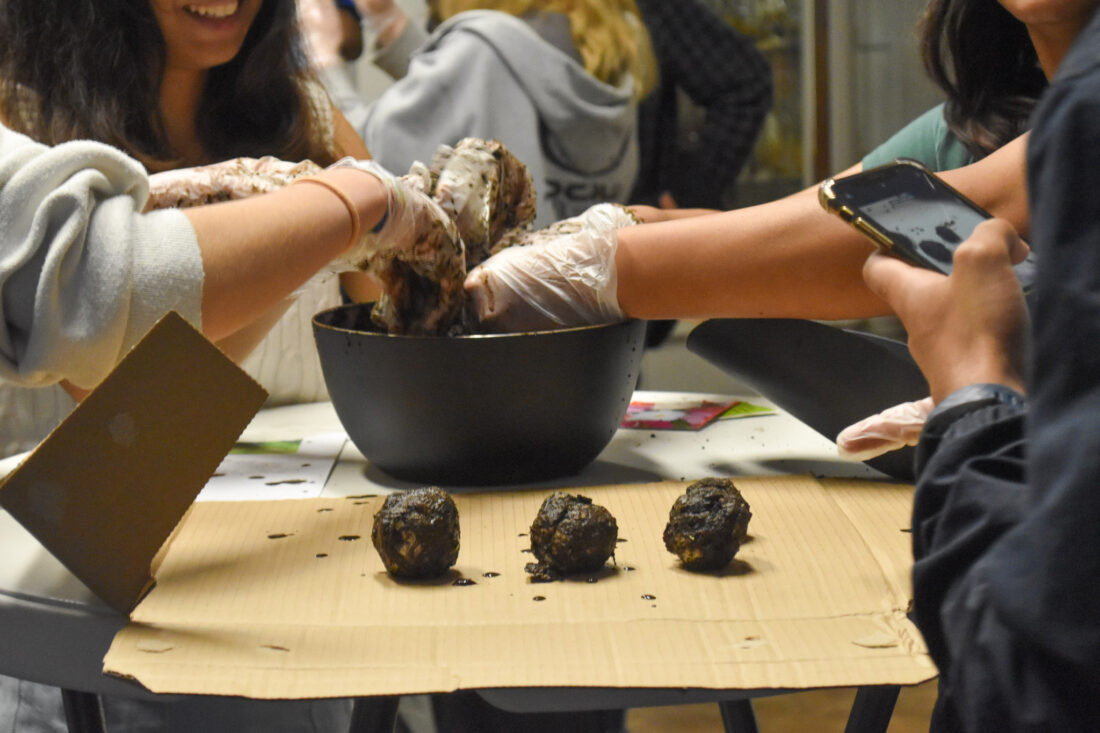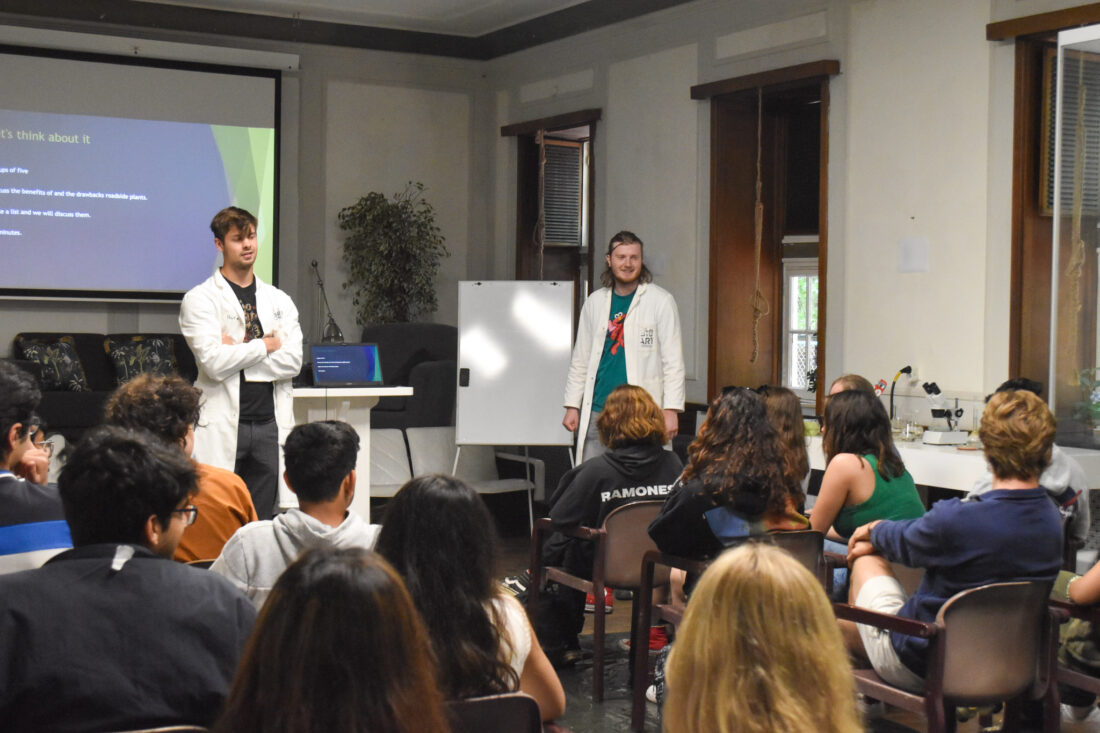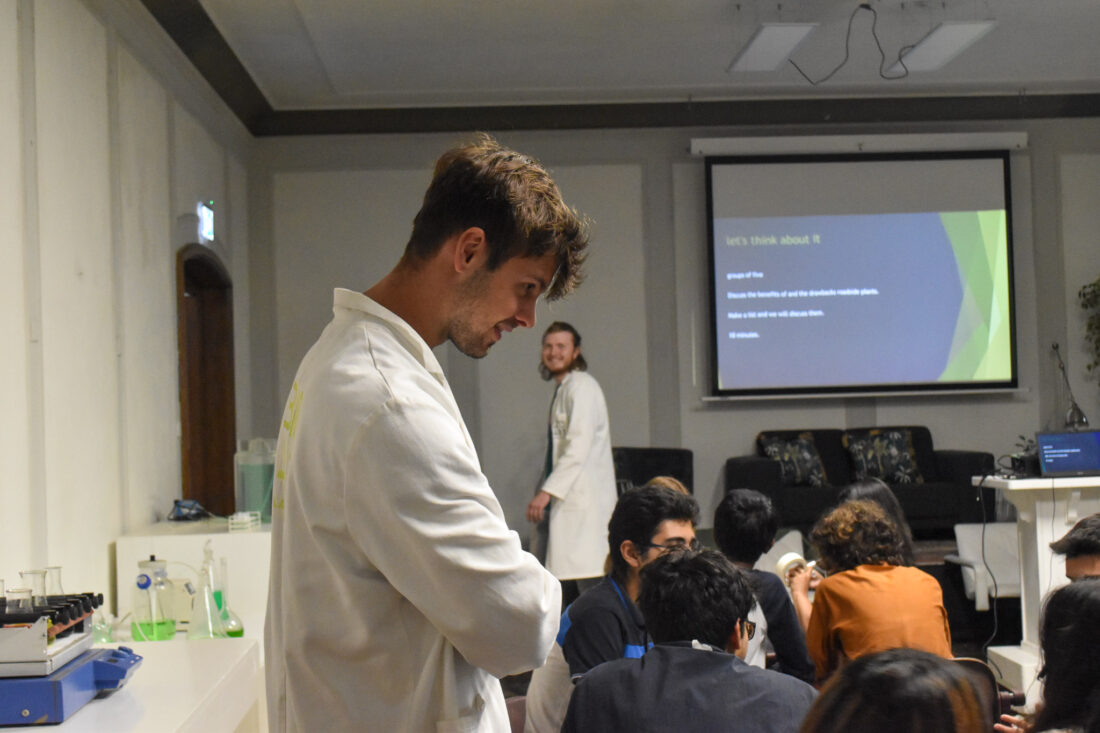Crosslab 2: bombs for biodiversity
Crosslab is a collaboration between BioArt Laboratories and the Fontys biology teacher study programme. Teachers in training have developed 6 courses about the Symbiocene. This is workshop 2 of 6. Read about the first workshop here.
The old wooden floors in the monumental bunker at BioArt Village are covered with a sheet. In the back of the room, two containers filled with soil are waiting patiently to be put to good use. They’ll have to keep waiting just a little longer.
Just like last week, students of the International School Eindhoven walk into the room. But they don’t seem to notice or care for the sheet, nor the soil. As they’re chatting, they just take place on the chairs that have been put in a classroom like alignment directly on top of the sheet. When the classroom is completely filled up, our Crosslab teachers in training, Boris and Harm, start their lecture. Today’s lesson teaches us a playful way of increasing biodiversity, through seed bombs.
Harm and Boris explain that seed bombs are dried up balls that consist of a variety of seeds, soil and nutrients. The idea is that when you throw these balls, seeds will scatter. And because of the nutrients and soil, these seeds will grow out to be healthy plants. In that way these little balls of soil contribute to promoting biodiversity. These are the only bombs that create life instead of destroying it.
But why not just plant seeds somewhere by hand? Of course throwing these balls is a lot more fun, but it might not work as well as just planting them carefully. This may be true, but seeds bombs are ideal for cultivating plants in areas that are hard to reach, like roadsides, hills, or difficult terrain. But that’s not to say fun isn’t a good enough argument by itself ;).
And why is it important to establish a rich biodiverse environment? To answer this question, Harm and Boris tell the students of the Irish potato famine – a tragedy caused by monoculture, in which year after year, only one crop was grown. Had there been a more biodiverse environment, the soil wouldn’t have become exhausted.
Another “horror” that has risen due to lack of biodiversity is that of the oak processionary caterpillar. Through urban planning, there’s little to no low growing foliage near oak trees. This lack of diversity in flora also means less diverse fauna, which means the oak processionary caterpillar doesn’t encounter any natural enemies and becomes a very itchy plague to humans.
This however, could be solved perfectly with the help of some seed bombs – which the students are finally going to make. The moment has arrived for the soil in the containers to play its part. The seats are swapped out for high tables: it’s time for the students to get their hands dirty – literally.
The students mix the soil with seeds and water into a muddy substance. As they knead the mud to form balls they giggle as if they were 10 years younger. Seems like these bombs don’t only create life outside, since they liven up the whole classroom. When all the mud is transformed into large ping pong balls they have to dry for a couple of days.
Date
May 26, 2022
Category
Education, Events






